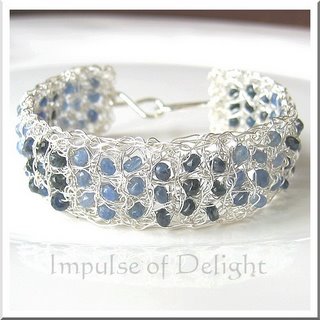 Sapphire is the non-red variety of corundum (red being ruby), an aluminum oxide mineral. It occurs in a wide range of colors; however, convention dictates that only blue sapphires are simply titled "sapphire", while any other color is included in the name (eg. padparadscha sapphire, white sapphire). Pink is supposed to be classified as ruby, but in practice is often designated as sapphire. Sapphire is the most precious of the blue gemstones, due to its hardness, durability and luster, with translucent cornflower blue being the most desirable hue. Padparadscha, a vibrant orange pink, is considered to be the most precious of the non-blue shades, although there is some disagreement on exactly which shades ought to be given the designation.
Treatments: Sapphires are routinely heated to improve their color, an industry accepted practice.
Hardness: 9
Care: Sapphires are very hardy and safe for normal gemstone care methods.
Some Common Terms:
Umba sapphire - mined along the Umba river in Tanzania. Color range includes blues, purples, gold, orange and pink shades. Lovely pastel shades are typical.
Songea sapphire - from Africa - color range includes deep red rubies, blues, blue greens, greens, yellows, pinks, and alexandrite-type (blue in sunlight and fluorescent light, lavender to purple in incandescent).
Tunduru sapphire - from Africa - full color range
Star sapphire - these have fine needle like inclusions which render the stone opaque, and when oriented properly, reflect light to form a moving star. Cut as cabochons to optimize the effect.
The bracelet above utilizes shades of blue sapphire, and is densely crocheted and overwoven in fine silver to form a flexible fabric incorporating the sapphire mosaic.
Sapphire is the non-red variety of corundum (red being ruby), an aluminum oxide mineral. It occurs in a wide range of colors; however, convention dictates that only blue sapphires are simply titled "sapphire", while any other color is included in the name (eg. padparadscha sapphire, white sapphire). Pink is supposed to be classified as ruby, but in practice is often designated as sapphire. Sapphire is the most precious of the blue gemstones, due to its hardness, durability and luster, with translucent cornflower blue being the most desirable hue. Padparadscha, a vibrant orange pink, is considered to be the most precious of the non-blue shades, although there is some disagreement on exactly which shades ought to be given the designation.
Treatments: Sapphires are routinely heated to improve their color, an industry accepted practice.
Hardness: 9
Care: Sapphires are very hardy and safe for normal gemstone care methods.
Some Common Terms:
Umba sapphire - mined along the Umba river in Tanzania. Color range includes blues, purples, gold, orange and pink shades. Lovely pastel shades are typical.
Songea sapphire - from Africa - color range includes deep red rubies, blues, blue greens, greens, yellows, pinks, and alexandrite-type (blue in sunlight and fluorescent light, lavender to purple in incandescent).
Tunduru sapphire - from Africa - full color range
Star sapphire - these have fine needle like inclusions which render the stone opaque, and when oriented properly, reflect light to form a moving star. Cut as cabochons to optimize the effect.
The bracelet above utilizes shades of blue sapphire, and is densely crocheted and overwoven in fine silver to form a flexible fabric incorporating the sapphire mosaic.
Thursday, March 30, 2006
Sapphire
Posted by
Ruth
at
3/30/2006 07:21:00 AM
![]()
Subscribe to:
Post Comments (Atom)

No comments:
Post a Comment